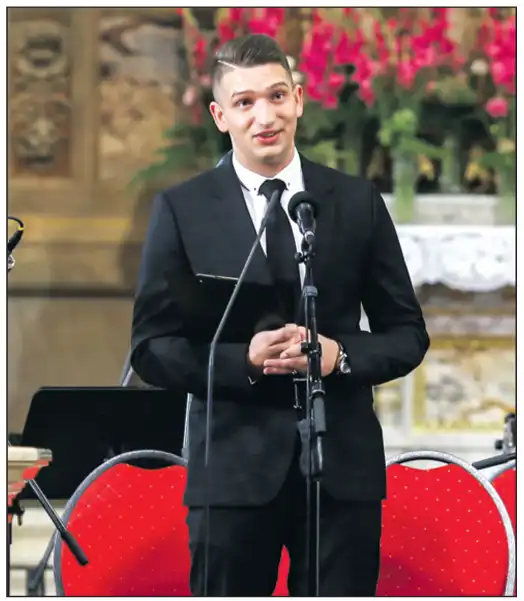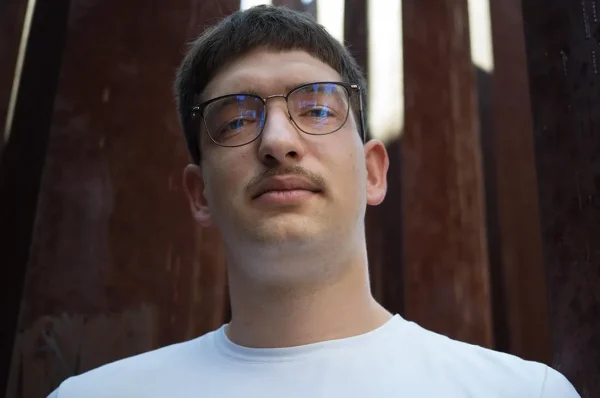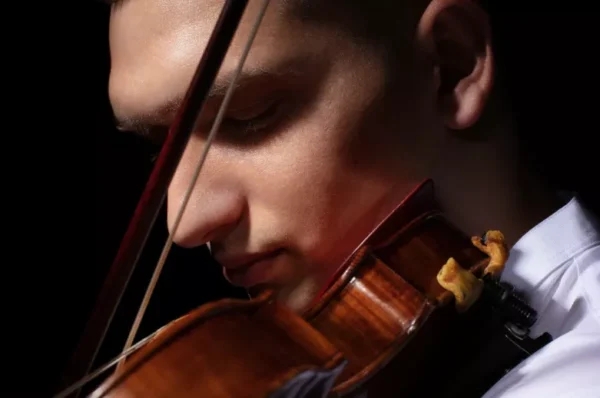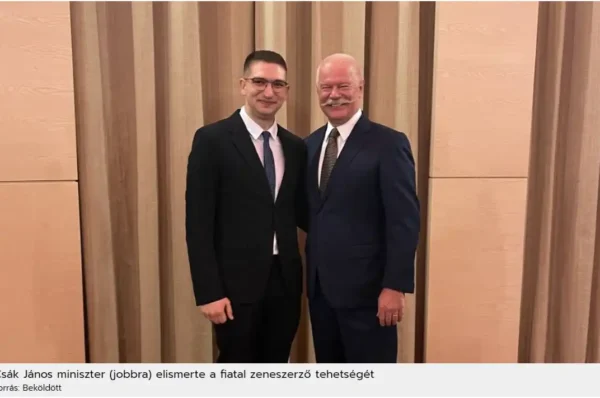On September 1, the St. Stephen’s Basilica in Budapest was the venue for the world premiere, where Oláh Patrik Gergő’s Le Devleske (“To God”) mass in the Lovarian language was premiered as part of the opening programs of the 52nd International Eucharistic Congress. We talked with the twenty-three-year-old composer, a master’s student at the Academy of Music, about the birth of the four-movement, quarter-hour work, classical and contemporary authors, and his own creative journey.
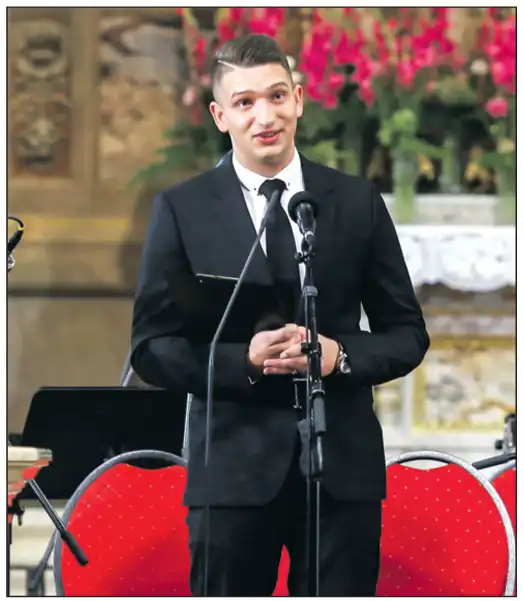
– The mass texts were recently translated into Lovary, and the organizers of the International Eucharistic Congress included its presentation in the program, so that a liturgical piece in the Lovary language was performed for the first time in the world in the St. Stephen’s Basilica in Budapest. To implement this plan, teacher György Lakatos, whom I have known for a long time, was asked to be the artistic director. he was my chamber music teacher for four and a half years at the Bartók Konzi. The year he received this assignment, 2018, I won several international composition competitions, so the teacher thought he would entrust me with writing the musical movements for the mass.
– What style and genre of music are you mainly interested in as a beginning composer in your career right now?
– I really like the more progressive music currently conquering the West. My latest string quartet, which has not yet been presented, also follows this line, among other things, microtonality. I have recently come to understand the why of contemporary classical music. Now I not only listen to a lot, but also write works of this type. Previously, I was mostly interested in György Ligeti, the music of the 60s and 70s, and from there I tried to move forward in the direction of 21st century experiments.
– He mentioned progressivism and contemporary influences, but I understand that his favorite composer is Tchaikovsky. A “wildly romantic” composer who created genius in all genres, be it opera, ballet, concert piece, symphonic poem, chamber music or even liturgical choral works.
– Tchaikovsky has been my favorite for twelve years now, I can say that he is my eternal favorite. When I listen to him, I always feel the respect he has for the audience. All his works exude this respect. It also releases extraordinary energies, which I think is unique. I would also like to display this emotional, lyrical and dramatic saturation with my music. But the fact that he is my favorite does not mean that I start from him when I want to write 21st century music.
– And who would you mention among your current inspirations?
– Lately, I’ve been listening more and more to the works of Georg Friedrich Haas, and William Dougherty’s string quartet also had a great influence on me. But I try to break away from everything and everyone, because the desire of a composer throughout his career is to break away from the past and create something new.
– This time, however, he was given a task that limited him somewhat, since the permanent parts of the mass were binding in terms of their text and message. In addition, Le Devleske is a work that mobilizes a chamber orchestra, choir and soloists, which, I think, also prompted a kind of authorial change of scale.
– It really meant a lot of commitment to write it; In 2018, I spent an entire summer thinking about how I could combine the church tone with Romani music. Then I started composing in autumn, in October. I would also like to include an extra opportunity to invite not only singers known from classical music circles to his performance. Le Devleske has four parts. The first is Kyrie. Perhaps this is the most classically conceived item. As Bartók wrote: motifs known from folk songs can be processed in several ways. This is what I did in Kyrie: I essentially composed it from tiny motifs taken from gypsy music. I have already received several criticisms that it is too Mozart – which of course I took as a compliment. The second movement is Gloria. This is a faster section, it presents the music of the European gypsies, mainly Hungarian and Balkan versions. Sanctusa is the third movement, which I connected with an interesting aspect, Russian gypsy music. For the message of “You are a saint”, it was very suitable for me. I’ll be curious to hear what the students think about it. The last movement – slower than the previous ones and with a larger volume – is the Agnus Dei; the two singers and soloists contributed to this: Nikoletta Szőke and Nikolas Takács. I hope I managed to give you a real ka tar zis experience. The dulcimer appears in each movement, sometimes with a more prominent role, and sometimes as an accompaniment, remaining in the background. In Agnus Dei, I tried to mix the church character, gypsy music and my own, individual voice, this whole mix in such a way that it fits the genre and style represented by the soloists. I tried to make the mass popular in the noblest sense of the word.
– How are the quotations, the existing classical gypsy musical motifs in proportion to the aforementioned own voice?
– I only took motifs for the first movement, Kyrie, the other movements, as well as the conceptual whole of the work, are my own compositions.
– To what extent was the goal to create a mass that could be sung by a wide range of believers and heard everywhere? Or was it originally intended as a concert piece tied to professional performance equipment?
– The version performed at the premiere classifies it more as a concert piece. But an easier-to-sing version with organ accompaniment will be prepared in the autumn, in which, if possible, those participating in the Lovár ceremonies can also join in.
– Was the spiritual involvement a given in your case, or did you perceive the invitation to write the mass primarily as a task, a professional challenge?
– There is no doubt that it felt like a big task, but of course it was close to me. If only because I grew up in a Roma family and received a good dose of the faith and the Roma mentality. And of course the church influence was also strong.
You’ve already tried yourself in several genres. But what topics, nearer and more distant creative goals are you currently interested in?
– I would like to be able to say in twenty years: I am a composer who creates in all genres.
Like Tchaikovsky?
Like Tchaikovsky. Let’s say, he obviously missed out on soundtracks, which I’m very interested in. But light music, pop appeals just the same. I am currently planning to write a symphonic orchestral piece. For the 100th anniversary of the declaration of my hometown, Salgótarján as a city, for the 2022 New Year’s concert there, I was commissioned to create a twenty-minute orchestral piece with choir and soloists. I took it because I like challenges. I want to write at least one opera, because I consider opera to be the pinnacle of composition. But my main plan is to connect the aforementioned progressive line with Roma music. Maybe this can be that certain new and original tone, my own, completely individual path.
Tamás Pallos
Photo: Attila Lambert
The original article is available at: https://ujember.hu/wp-content/uploads/2021/10/210919_mertek__.pdf
The article is available for download: 5defc96c-d50d-4fdf-9796-6902d90033fb

